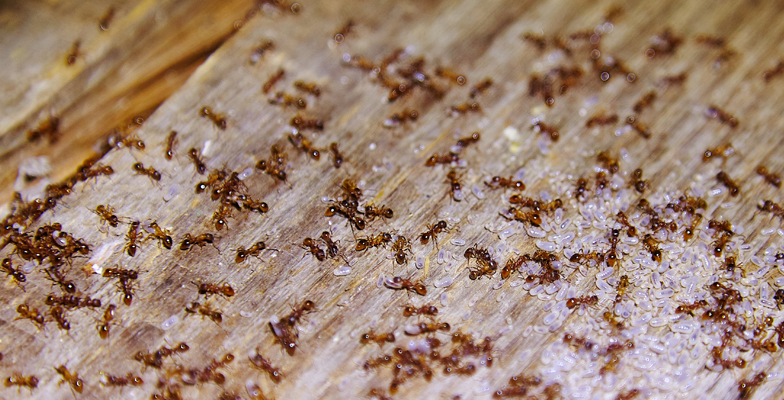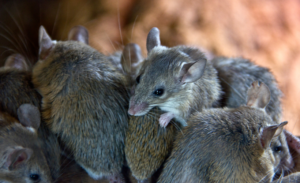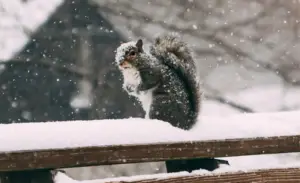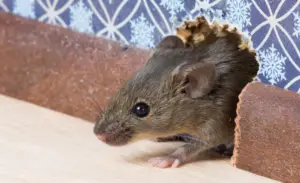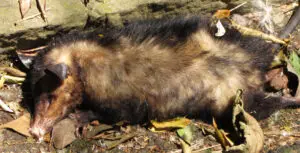Despite their minuscule size, ants in Southwestern Ontario can quickly become a household nuisance. Whether they are burrowing into your home’s wooden structure or trailing through your kitchen in search of food, these pests can overrun your property. Unlike other household pests, ants pose little threat to the health of you or your beloved pets. However, without the appropriate ant control treatment, one ant nest can quickly multiply, converting your property into the mega sight for numerous underground colonies.
Read on to learn more about Ants in Southwestern Ontario and what to do if they have chosen your home for their next colony.
What are Ants?
When it comes to ants, certain species pose a much larger threat than others. Therefore, it is crucial to know how to distinguish between different ant species. The most common types of ants in Southern Ontario are pavement, pharaoh, carpenter, and fire ants.
Pavement Ants
Pavement ants are a common sight during the warmer months as they cross sidewalks and patios carrying eggs and scraps of food to their colonies. These common pests can be identified by several distinguishing features. The worker ants are between 1/8 – 1/16-inch long and have a pair of spines down their back, two nodes on the petiole, and grooves along their head and thorax. The queen ant and the swarmers are twice the size of worker ants and have wings.
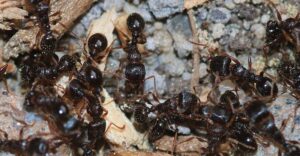
These ants can be an irritating pest, especially when they find their way into your food store, however, they pose a minimal threat to your property.
Carpenter Ants
Unlike other ant species which will feed on crumbs and grease, black carpenter ants feed almost exclusively on decaying wood. They will tunnel their way through wooden structures to access decaying or damaged areas and subsequently consume them. This can severely weaken the integrity of the structure and lead to further damage if left untreated.
The easiest way to identify carpenter ants is by their size. The queen can be an inch long, with her workers growing to between 3/8 to 1/2-inch. While carpenter ants can vary in color, ranging from black to yellow, they all share the following physical characteristics: large mandibles, a single node between the thorax and the abdomen, and a ring of hairs around the tip of the abdomen.
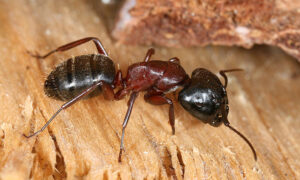
If you spot carpenter ants on your property, it is essential that you contact your local pest control service before they can cause structural damage to your home.
Fire Ants
First discovered in Canada in the 1970s, the European fire ant is an invasive and highly aggressive species. With a sting that is often compared to that of a hornet, it is always best to avoid them where possible. If you discover fire ants on your property, for your own safety, it is best to give them a wide breath before contacting a pest control company.
Feeding predominantly on decaying plant and animal matter, these ants typically build their nests in damp areas of underbrush. Their colonies can rapidly grow in size and have been known to host up to 300,000 ants.
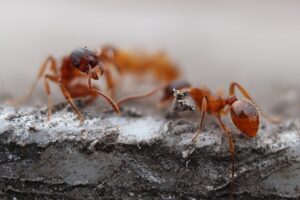
While small in size, these ants are easily recognizable due to their red color and the stinger at the bottom of their abdomen. The queen ant will also have two transparent wings.
Pharaoh Ants
Pharaoh ants are one of the hardest species to successfully remove from a property because when a nest is disturbed, it splits into several smaller nests. Thus, while you may believe you have eliminated a nest, it may have actually divided itself into multiple colonies that will continue to grow and infest your home.
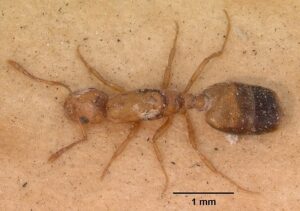
These ants can be difficult to spot because they only grow to around 1.5 mm long. Their color ranges from light brown or red to yellow.
Signs You Have Ants in Your Home
Given that most ant species have to leave their nests to collect food, they are commonly spotted walking in lines between their nest and food supply. As they travel, ants leave behind a chemical signature that other worker ants can follow. Therefore, ants will often walk the same route through your garden or kitchen, making them easy to spot.
If you are concerned that you might have carpenter ants on your property, there are several warning signs to be aware of. At the entrances and exits to their tunnels, carpenter ants will leave behind piles of wood dust and debris. Regularly checking your wooden window sills and foundations for these piles and narrow holes is the surest way to uncover an ant infestation.
How to Prevent an Infestation
There are numerous ways to make your home less desirable to these urban pests. If your home has timber structures, it is a magnet to carpenter ants. To protect the wood in your home from ants, you need to seal it or cover it with a metal barrier. This ensures that hungry ants cannot enter the wood and start breaking it down.
During the summer months regularly cleaning your home can prevent an ant infestation. Pavement and pharaoh ants feed on remnants of sugary and greasy foods. By routinely sweeping and cleaning your floors, you can remove any food traces and subsequently deny the ants access to their food source. Storing your groceries in sealed containers can also be beneficial.
What to Do If You Discover Ants on Your Property
If you have seen ants or evidence of ants in your home, the best thing to do is call for an ant control service like Pro Trap. While there are numerous at-home remedies for ants, they can actually worsen the situation if they are not administered correctly. These pest control professionals will be able to identify the exact species of ant and, subsequently, proceed with the most effective treatment.
Calling a licensed pest management team, like Pro Trap is the best way to prevent further damage to your property. We will also be able to offer you advice specific to your home and how to prevent ants from returning to the area.
Final Thoughts
While the thought of ants and the damage they can cause is an unpleasant one, it is important to remember that there are trained professionals who can help you and your property.
If you suspect there are ants in your home, contact Pro Trap today for a Free Estimate and relax knowing your home is in good hands.
